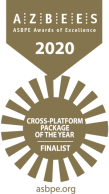WASHINGTON, D.C.—The news from the U.S. Travel Association (USTA)’s Q3 Travel Outlook media conference call this week was negative, with air travelers saying they will take an average of two fewer trips per year due to air travel hassles — a total of 27 million avoided trips, according to a new study by Ipsos, Longwoods International and U.S. Travel.
The economic impact is a projected total cost of $71 billion to the U.S. economy, including $4.5 billion in lost tax revenue.
“Today, nearly two-thirds of recent travelers find the air travel experience to be the equivalent or worse than going to the DMV,” Geoff Freeman, President and CEO of USTA, said. “What does that say about the state of air travel and what can be done to fix it? The federal government is failing travelers and there is a very real cost.”
This sentiment extends to the business travel segment; in fact, the survey found that business travelers are more likely to be frustrated with the process, avoid trips and use alternatives when possible. 74% of business travelers are traveling less than they did pre-pandemic due to the unpredictability of flights, cancellations and delays, along with their companies restricting business travel.
“Business travel has basically stagnated at about 75 to 80% of what it was pre-pandemic,” Freeman said. “That’s a massive drop from where we would like to see business travel at this point.”
Freeman painted a picture that all travelers know well: hours to get through customs at key gateways, inconsistent TSA wait times and a security screening experience that has not evolved in the last 20-plus years.
At the root of much of the problem is a shrunken workforce. Nearly one in four flights are delayed or canceled in part because of FAA workforce shortages and antiquated air traffic control technology, Freeman said. TSA has faced a roughly 20% workforce attrition rate in recent years, which is significantly higher than elsewhere in the government. There are 1,200 fewer air traffic controllers than a decade ago. Customs and Border Protection is 1,700 officers short of demand, resulting in long lines at customs for arriving passengers.
But the struggle starts long before people get to an airport, Freeman said. “They face 400+ days in our top markets to get a visa interview to come to the United States, and eight- to 11-week delays for U.S. citizens to get a passport for outbound travel. It’s a four- to six-month wait to get into Global Entry, and there are 12- to 14-month delays to get NEXUS approval.”
There is a silver lining in the form of technology — and resilience. Roughly two-thirds of recent air travelers are comfortable sharing their biometric data with either the government, a private corporation or both. This is a significant opportunity for the U.S. to implement biometric technology and improve efficiency, as other countries have done.
If the government can improve air travel systems, the survey found, half of air travelers say that they would travel more in the next six months. Business travelers would take an average of two more business trips per year if the air travel experience improved — the equivalent of 18 million additional trips and $52 billion in spending.
Reach Geoff Freeman at gfreeman@ustravel.org












